The best way to break down the marks left by foot falls, is by the number of toes that show across the front of the track, and whether the claws/nails show.
Two Toes - Beasts with Hooves (deer or mutants)
Mule Deer
About 2" wide and 2.5" long. Buck's hoof marks are generally larger than those of does and may also show 2 dot-like marks at rear of track.

==========
Three Toes - Birds or Velociraptors (pack a light saber)
California Quail
Quail tracks are small - under 1.5" wide and long. Sometimes wing marks are also made as the quail flit their wings to get across deeper/softer snow.
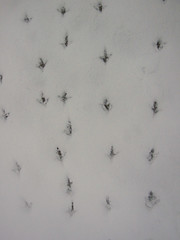
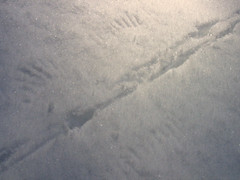
Mallard or Wood Duck
Daffy's tracks are a little over 2" wide. Webbing makes them distinct.
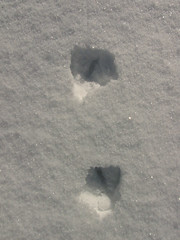
Wild Turkey
Turkey tracks are big - over 2" for sure, with 3-4" typical. Pretty obvious when you see 'em. The rear fighting spur can often be seen on the tracks of the males.
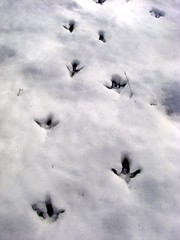
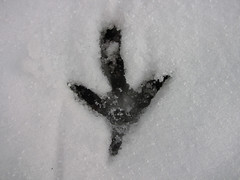
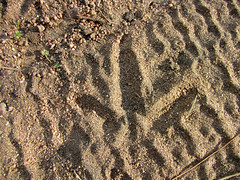
==========
Four Toes and No Visible Claws - Bunnies & Kitties
Brush Rabbit
About 1" wide with longer rear tracks (if not walking on toes).
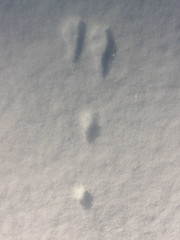

Black-tailed Jackrabbit
Splayed toes are more distinct than brush rabbit. About 1-1.5" wide, with longer rear tracks. Hopping pattern often causes rear foot falls to land on front foot prints.
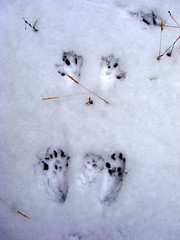
Domesticated Cat (don't have yet)
Similar to the Bobcat below, but smaller - about 1" wide and long, toes more compact.
Bobcat
About 1.5-2" wide and long.
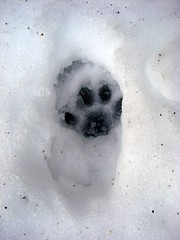
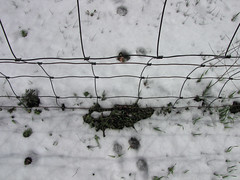
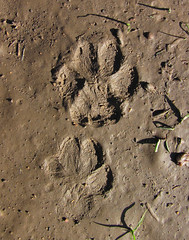
Mountain Lion / Cougar (don't have yet)
Similar to the Bobcat track above, but bigger - about 3-3.5" wide and long.
==========
Four Toes with Visible Claws - Canids
Gray Fox (don't have yet)
Similar to Coyote below, but smaller - less than 1.5" wide and long. Should show very little overlap between front and rear toes.
Domesticated Dog
Varies by size and breed of dog. Track below is a small dog and is about 1" wide and 1.25" long. Dog prints are generally compact, with lots of overlap between front and rear toes. Front toes may be bigger than side toes. Dog tracks tend to be longer than wide.
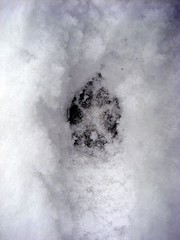
Coyote
About 2-2.25" wide and long. Not always easy to distinguish from tracks of similar-sized dogs.
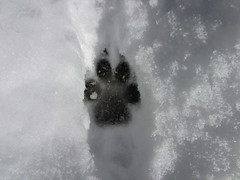
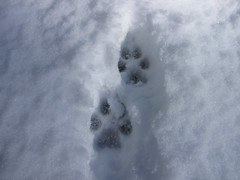
==========
Five Toes in Front / Four Toes in Back with Visible Claws
Western Gray (Tree) Squirrel
About 1.5" wide and long. Strong claw marks.
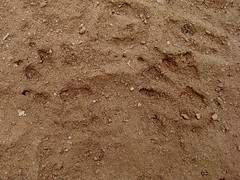
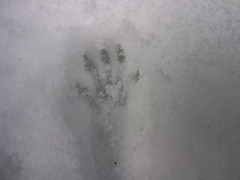
==========
Five Toes Across with Visible Claws
Raccoon
About 1.5-2" wide and 2-2.5" long. Long fingers are distinct. Very hand like.
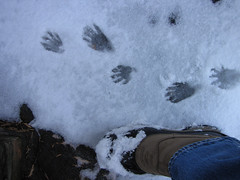
Ringtail (don't have yet)
Similar to Raccoon but short toes and smaller track - about 1" wide and long.
Opossum (don't have yet)
Similar to Raccoon but short toes and smaller track - about 1.25" wide and long.
Striped Skunk (don't have yet)
Similar to Raccoon but short toes and smaller track - about 1.25" wide and long.
Black Bear
About 4-5" wide. Heels may be seen on rear foot strikes. Size makes them distinct.

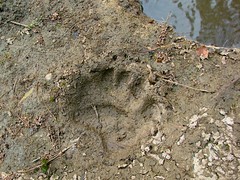
==========
Other tracks you might see:
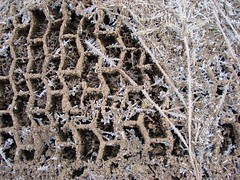
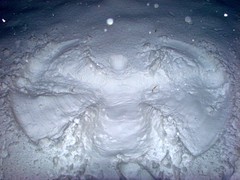
==========
Related (and hopefully interesting) factoids:
- The oldest animal tracks found so far are about 570 million years old, and were left in the bottom mud of an inland sea, now desert, in Nevada near Death Valley. They're two parallel rows of dots that look as though a centipede-like beastie left them.
- The oldest hominid footprints (of Australopithecus afarensis) discovered-to-date were found by Mary Leakey in Tanzania and are about 3.75 million years old.
- The oldest known human footprints (genus Homo) are 350,000 years old and were left in active silt/ash flow on the side of the Roccamonfina volcanoes in southern Italy.
References:
- John Muir Laws - The Laws Field Guide to the Sierra Nevada
- Tamara Eder - Mammals of California
- United States Search & Rescue Task Force - Animal Tracks
- Naturetracking.com - Nature tracking
- Wikipedia - Tracking (hunting)
- Wikipedia - Velociraptors
- National Geographic - World's Oldest Footprints Found in Nevada?
- BBC News - Oldest Human Footprints Found

Great collection of very clear specimens, along with interesting explanatory text. Will look forward to seeing your collection grow!
ReplyDeleteWanted to try to comment on your blog to see if the info. you gave me works... Loved the blog and pics...
ReplyDelete